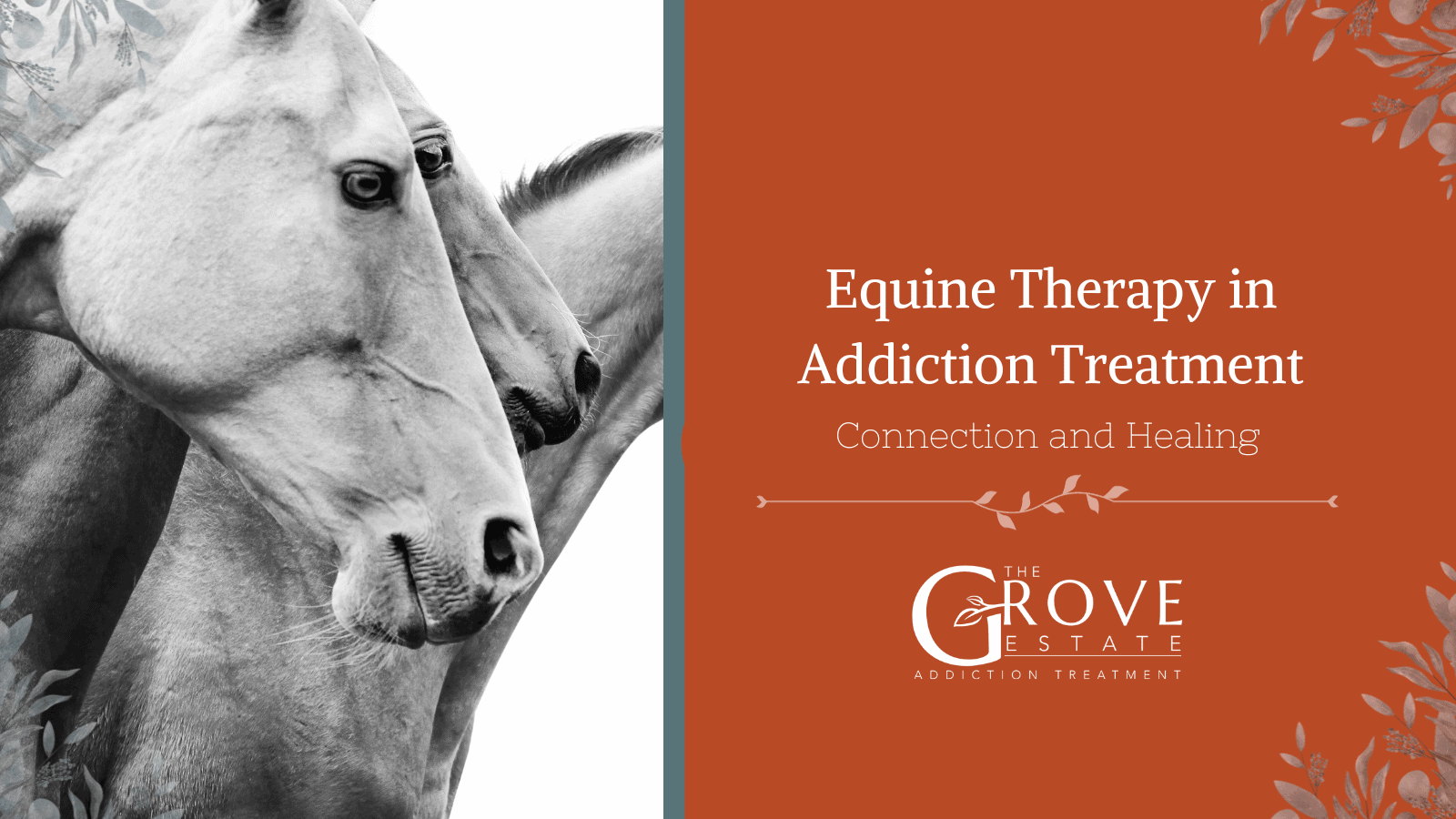Key Takeaways
Equine-assisted therapy involves interaction with horses to promote emotional and psychological healing.
This therapy can significantly improve emotional regulation and self-awareness, which are crucial in addiction recovery.
Historical roots of equine therapy date back centuries, with modern applications being scientifically supported.
Participants often experience improved social skills and self-esteem through structured therapy sessions.
Equine therapy is most effective when combined with traditional addiction treatment methods.
How Equine-Assisted Therapy Contributes to Addiction Rehab
Equine-assisted therapy, often referred to as EAT, is an innovative approach that leverages the therapeutic bond between humans and horses to aid in addiction recovery. This method isn’t just about riding horses; it involves a variety of activities that help individuals develop crucial life skills and emotional insights. The process of caring for and interacting with horses provides a unique environment where individuals can explore their emotions and behaviors.
Most importantly, equine therapy helps break down the barriers that often prevent addicts from engaging in traditional forms of therapy. The presence of a horse, a non-judgmental and responsive animal, can make the therapy experience less intimidating and more engaging. This can be particularly beneficial for those who struggle to open up in conventional therapy settings.
Improves emotional regulation and self-awareness.
Fosters a sense of responsibility and routine.
Provides a non-judgmental space for self-exploration.
“Equine Therapy in Addiction Treatment …” from grovetreatment.com and used with no modifications.
Introduction to Equine-Assisted Therapy
Equine-assisted therapy is a form of experiential therapy where clients engage in activities with horses. These activities can include grooming, feeding, leading, and riding. Guided by trained professionals, participants work on building trust, communication, and emotional awareness. Horses are incredibly intuitive creatures and can mirror the emotions and energy of the individuals they interact with, providing immediate feedback on the participant’s emotional state.
The therapy sessions are designed to challenge individuals and encourage them to reflect on their thoughts and actions. For instance, if a person is feeling anxious or tense, a horse may respond by becoming restless. This instant feedback helps individuals recognize and regulate their emotions more effectively. To learn more about the benefits of equine therapy, check out this article on equine therapy and addiction recovery.
Historical Perspectives
Equine therapy isn’t a new concept. Its roots trace back to ancient Greece, where horses were used for therapeutic riding as a form of rehabilitation. In the 20th century, the benefits of equine therapy gained recognition in the medical community, particularly for physical rehabilitation and mental health treatment.
The modern application of equine therapy in addiction treatment emerged as therapists recognized the profound impact that working with horses had on emotional and psychological well-being. Today, equine-assisted therapy is an integral part of many holistic addiction recovery programs, offering a unique blend of physical, emotional, and psychological benefits.
Benefits of Equine-Assisted Therapy in Addiction Recovery
Equine-assisted therapy offers a multitude of benefits for those on the path to recovery from addiction. The presence of horses in therapy sessions can provide a calming effect, reducing anxiety and promoting a sense of peace. Furthermore, the activities involved in equine therapy encourage participants to engage in the present moment, which can be a powerful tool for managing cravings and reducing the risk of relapse.
Moreover, the structured nature of equine therapy sessions can help individuals develop a sense of routine and responsibility, both of which are critical in maintaining sobriety. The skills learned during these sessions often translate into other areas of life, empowering individuals to make positive changes and build healthier relationships.
Building Emotional Connections
One of the key benefits of equine-assisted therapy is its ability to foster emotional connections. Horses, by their very nature, are social animals that thrive on interaction and communication. When individuals engage with horses, they learn to interpret and respond to non-verbal cues, enhancing their emotional intelligence.
In addiction recovery, building emotional connections is crucial. Many addicts struggle with feelings of isolation and detachment, which can hinder their recovery journey. By forming a bond with a horse, individuals can experience a sense of connection and belonging, which can be incredibly healing.
Case Studies and Research Insights
Equine-assisted therapy has garnered attention in the field of addiction treatment due to its unique and impactful approach. Numerous case studies and research projects have documented the benefits of this therapeutic method, providing valuable insights into its effectiveness.
A study conducted at a rehabilitation center in Arizona found that participants who engaged in equine therapy reported a significant reduction in anxiety and depression symptoms.
Research published in the Journal of Substance Abuse Treatment highlighted that individuals participating in equine therapy were more likely to complete their treatment programs compared to those who did not.
Another study observed that equine therapy participants demonstrated improved social skills and increased self-esteem, both of which are crucial for long-term recovery.
These findings underscore the potential of equine therapy to complement traditional addiction treatment methods. By providing a holistic approach to recovery, equine therapy can address the emotional and psychological aspects of addiction, which are often overlooked in conventional treatments.
Moreover, the experiential nature of equine therapy allows individuals to apply the skills they learn in therapy to real-life situations. This hands-on approach can enhance the effectiveness of treatment and improve outcomes for those struggling with addiction.
Documented Success Stories
Success stories from individuals who have participated in equine-assisted therapy further illustrate its transformative impact. For instance, John, a recovering addict, shared his experience of how working with horses helped him rebuild trust and communication skills. “The horses taught me patience and understanding,” he said. “I learned to listen not just with my ears, but with my heart.”
Similarly, Sarah, another participant, credited equine therapy with helping her overcome her fear of vulnerability. “Being around horses made me feel safe enough to open up,” she explained. “They don’t judge; they just respond to your energy.”
Academic Research Findings
Academic research has also provided empirical evidence supporting the benefits of equine-assisted therapy in addiction recovery. A study published in the Journal of Addiction Medicine found that participants in equine therapy programs exhibited lower levels of cortisol, a stress hormone, compared to those in traditional therapy programs. This suggests that equine therapy can effectively reduce stress and promote relaxation, which are essential for recovery.
Another study, conducted by researchers at the University of Kentucky, revealed that equine therapy participants showed significant improvements in emotional regulation and self-awareness. These findings highlight the potential of equine therapy to address the underlying emotional issues that often contribute to addiction.
Integration into Rehab Programs
Integrating equine-assisted therapy into addiction rehab programs requires careful planning and coordination. It is essential to ensure that the therapy sessions align with the overall treatment goals and complement other therapeutic interventions.
Many rehab centers have successfully incorporated equine therapy into their programs, offering it as a supplemental treatment option. This integration allows individuals to benefit from the unique therapeutic aspects of working with horses while still receiving traditional forms of treatment, such as counseling and group therapy.
Challenges of Incorporating Equine Therapy
Despite its benefits, incorporating equine therapy into rehab programs can present several challenges. One of the primary obstacles is the need for specialized facilities and trained staff. Equine therapy requires access to horses and a suitable environment, which may not be feasible for all rehab centers.
Additionally, ensuring the safety of participants and horses is crucial. This requires ongoing training and supervision of both the horses and the therapy staff. Overcoming these challenges involves collaboration between rehab centers, equine specialists, and mental health professionals to create a safe and effective therapy environment.
Training and Certification for Practitioners
To provide effective equine-assisted therapy, practitioners must undergo specialized training and certification. This ensures that they have the necessary skills and knowledge to facilitate therapy sessions safely and effectively.
Certification programs typically cover topics such as horse behavior, therapeutic techniques, and safety protocols. By completing these programs, practitioners can gain a comprehensive understanding of how to integrate equine therapy into addiction treatment and support participants on their recovery journey.
Furthermore, ongoing professional development is essential to stay updated on the latest research and best practices in equine therapy. This commitment to continuous learning ensures that practitioners can provide the highest quality of care to their clients.
Practical Considerations for Participants
For individuals considering equine-assisted therapy as part of their addiction recovery journey, there are several practical considerations to keep in mind. Understanding what to expect in therapy sessions can help participants feel more comfortable and prepared.
Equine therapy sessions typically involve working with horses in a controlled environment, such as a stable or equine facility. Participants may engage in activities like grooming, leading, and riding horses, all under the guidance of trained professionals. These activities are designed to promote self-awareness, emotional regulation, and social skills.
Safety is a top priority in equine therapy. Participants should wear appropriate clothing and footwear and follow all safety guidelines provided by the therapy staff. It’s also important for participants to communicate any concerns or anxieties they may have, as this can help therapists tailor the sessions to their needs.
Ultimately, equine-assisted therapy offers a unique and rewarding experience for those in addiction recovery. By fostering a connection with horses, individuals can gain valuable insights into themselves and develop the skills needed for a successful recovery.
What to Expect in Equine Therapy Sessions
Equine therapy sessions offer a unique therapeutic experience that combines physical activity with emotional healing. When you arrive at a session, you’ll typically start by meeting the horse you’ll be working with. This initial interaction sets the stage for building trust and rapport with the animal. You’ll engage in activities such as grooming, leading, or even riding the horse, depending on your comfort level and the goals of the therapy.
Throughout the session, a trained therapist will guide you, helping you interpret the horse’s responses and encouraging you to reflect on your emotions and behaviors. The therapist will use these interactions as a foundation for discussion, helping you draw parallels between your experiences with the horse and your personal life. This reflective process can provide valuable insights into your emotional state and coping mechanisms.
Addressing Safety Concerns
Safety is a paramount concern in equine-assisted therapy. Horses are large, powerful animals, and it’s essential to ensure that both participants and horses are safe during sessions. Before beginning therapy, you’ll receive an orientation on how to interact safely with horses, including instructions on approaching, handling, and riding them.
Therapists and equine specialists work together to create a controlled environment where risks are minimized. They will assess each participant’s comfort level and adjust activities accordingly. Wearing appropriate clothing, such as sturdy shoes and a helmet, is crucial for safety. By adhering to these guidelines, you can enjoy a rewarding and safe therapy experience.
Final Thoughts on Equine-Assisted Therapy
Equine-assisted therapy offers a powerful, non-traditional approach to addiction recovery. By engaging with horses, individuals can develop emotional awareness, improve social skills, and build self-esteem. These benefits are particularly valuable for those struggling with addiction, as they address the underlying emotional issues that often contribute to substance abuse.
While equine therapy is not a standalone treatment, it can be a valuable complement to traditional methods such as counseling and group therapy. By incorporating equine therapy into a comprehensive treatment plan, individuals can gain a holistic perspective on their recovery journey and build the skills necessary for long-term sobriety.
Frequently Asked Questions
As equine-assisted therapy becomes more popular, many people have questions about its application and benefits. Here are some common queries:
Why is equine-assisted therapy used in addiction rehab?
Equine-assisted therapy is used in addiction rehab because it provides a unique, experiential approach to healing. By working with horses, individuals can explore their emotions, develop self-awareness, and build trust—all essential components of successful recovery. Horses offer immediate feedback on a person’s emotional state, helping them recognize and regulate their feelings.
How are horses involved in the therapy process?
Horses play a central role in equine-assisted therapy. Participants engage in various activities with the horses, such as grooming, feeding, and leading them through exercises. These interactions help individuals develop communication skills and emotional awareness. Horses, being intuitive animals, respond to a person’s energy and emotions, providing valuable insights into the participant’s behavior.
For example, if a participant is feeling anxious, the horse may become restless. This immediate feedback encourages the individual to reflect on their emotional state and learn strategies for calming themselves.
Additionally, the process of caring for a horse fosters a sense of responsibility and routine, which are crucial for maintaining sobriety.
What are common goals of equine-assisted therapy?
Common goals of equine-assisted therapy include improving emotional regulation, enhancing communication skills, and building self-esteem. Participants also work on developing trust, both in themselves and in others. These goals are achieved through structured activities and guided reflection, allowing individuals to gain insights into their behavior and emotions.
Another goal is to help participants develop coping strategies for managing stress and anxiety. By interacting with horses, individuals can practice mindfulness and learn techniques for staying present in the moment. This focus on the present can be especially beneficial for those in recovery, as it helps reduce cravings and prevent relapse.






